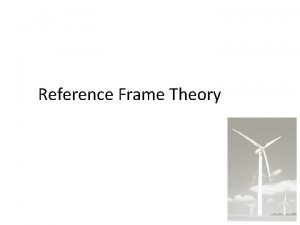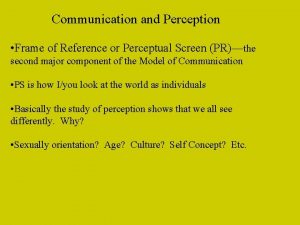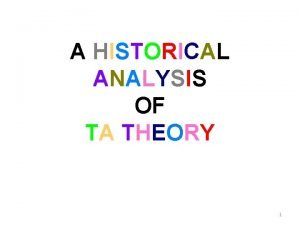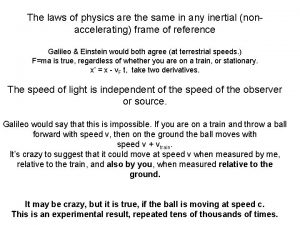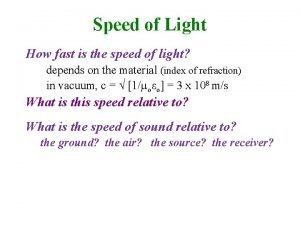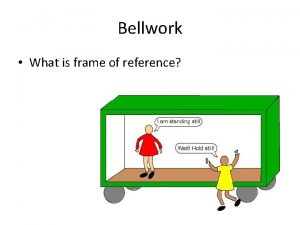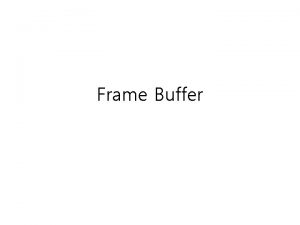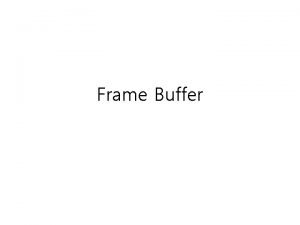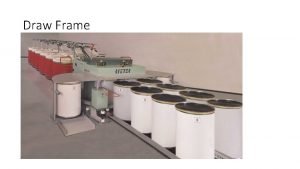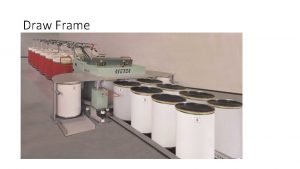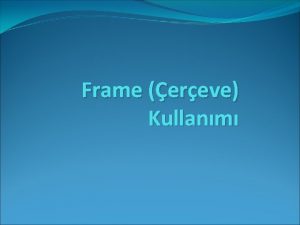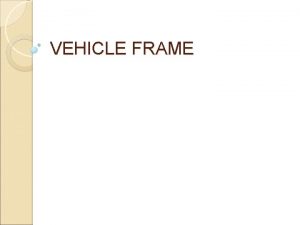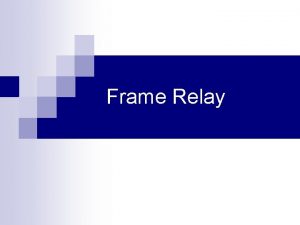Motion Part 1 Frame of Reference l Frame












- Slides: 12

Motion

Part 1

Frame of Reference l Frame of reference – nonmoving objects that are used to compare with a moving object – To know how fast something is moving, you need to compare that object with other objects that are around it that are not moving

Distance vs. Displacement l Distance l Displacement – Length between 2 – Length AND Direction points – Usually measured in m, km, cm, etc. – Ex: walk 5 blocks north

Measuring Displacement l Displacement Along a Straight Line 4 km 2 km – ADD vectors if they are in the SAME direction – SUBTRACT vectors if they are in OPPOSITE directions Displacement: 6 km 4 km 2 km Displacement: 2 km

Measuring Displacement l Displacement NOT Along a Straight Path 3 blocks – Add/subtract 2 blocks magnitudes of ALL vectors 1 block 1 + 2 = 3 east 1 + 3 = 4 (north) 3+4=7 Displacement: 7 blocks Northeast

Part 2

Measuring Motion l Speed – rate at which an object moves Distance (d) Speed (υ) = Time (t) Speed: km/h or m/s Distance (d): km or m Time (t): hr or s d υ t

Measuring Motion l Example: – If you travel 120 miles in 2 hours, how fast were you going? (You must label ALL measurements!!!)

Types of Speed l Constant Speed – speed does not change – Graph is a straight line l Average Speed – speed is not always constant – Graph is not a straight line

Velocity l Velocity – speed in a given direction – Ex: 100 km/h is speed 100 km/h North is velocity – Land, sea, and air travel all involve the use of velocity – Calculate velocities by ADDING those in the same direction and by SUBTRACTING those in opposite directions

Changes in Velocity l Acceleration – rate of change in velocity – Speeding up – Graph curves upward l Deceleration – negative acceleration – Slowing down – Graph curves downward Accleration (a) = Final Velocity (vf) – Initial Velocity (vi) Time (t)
 Reference node and non reference node
Reference node and non reference node Reference node and non reference node
Reference node and non reference node Dqo transformation
Dqo transformation What is frame of reference in communication
What is frame of reference in communication Competitive frame of reference example
Competitive frame of reference example Contoh frame of reference dan field of experience
Contoh frame of reference dan field of experience Contoh frame of reference
Contoh frame of reference Frame of reference units
Frame of reference units Brand positioning bulls eye
Brand positioning bulls eye Frame of reference jacqui and aaron schiff
Frame of reference jacqui and aaron schiff Inertial frame of reference
Inertial frame of reference Inertial and non inertial frame of reference
Inertial and non inertial frame of reference Speed of light in vacuum
Speed of light in vacuum


